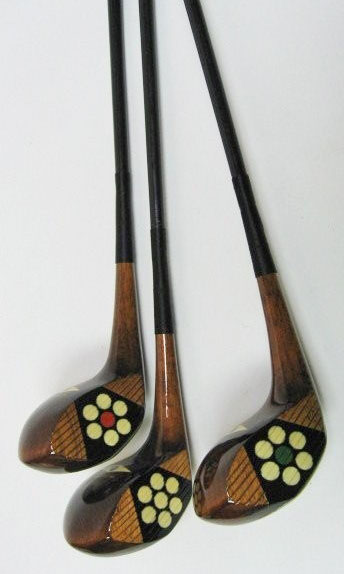Antique & Vintage Golf Club Collectibles- Values and History of Golf Clubs through the Ages
Golf has been a popular sport since its invention in Scotland in the 1400s, and while its collectible opportunities are numerous, golf clubs are probably the most popular and valuable.
While golf has always been popular, sometimes it’s more popular than others, and although subject to the whims of fashion, golf has a long history as a favorite leisure activity. Due to its long term appeal, golf and its equipment and memorabilia have always found favor with collectors, although prices and values have been subject to wild fluctuations over the years. Collectible golf categories include balls, tees, scorecards, bags, magazines, photos, trophies, flags, and autographs, but by far, the most popular golf collectible are the clubs used to play the game.
Collectible Antique and Vintage Golf Clubs
Because of its long history as a popular sport, golf clubs from as early as the 1700s still exist. These clubs belong to the earliest of the three categories that are typically used to describe the age and type of a collectible golf club. The club categories correspond to the type of ball that was used with them.
Golf Club Categories
These categories are used for the purpose of describing the vintage of golf clubs:
The Featherie – this earliest type of ball was used until around 1850. Made from a core of boiled bird feathers, the feathery was then wrapped in strips of leather that were sewn together. Clubs from the feathery years were slim and light headed, made entirely of wood, and used to sweep the ball rather than hit it. Pre-1850 clubs are almost always wooden.
The Guttie – used between 1845-1900, the guttie ball was made of solid gutta percha (a rubber-like material). These hard, heavy balls proved too much for the lightweight clubs of the featherie years. Guttie driving clubs had thicker wooden heads, and irons came into use at this time.
The Modern ball – around 1900, a new ball made of wound rubber strips wrapped in a textured rubber cover was developed, and within twenty years or so, steel shafts became the norm for all clubs.
Antique and Vintage Golf Clubs for Collectors
Pre-1850 woods (so called because the clubs have both wooden heads and shafts) are possibly the most collectible, especially those made in Scotland by makers Hugh Philip (although after his death, his stamp was stolen and forgeries of his clubs flooded the market) and three generations of the McEwan family. The Philips clubs are long-nosed with heads around 5” long at the striking surface. McEwan clubs are marked with the family name. This company was still making clubs into the 1970s, but the ones produced between 1790-1850 are the most valuable. Prices for common golf clubs were at the highest in 2001-2002, but have since come down. The upturn in values probably had something to do with Tiger Wood’s domination of the sport during those years, and his rekindling of world-wide interest in golf.
Newer collectible clubs include those from the 1930s-1960s, especially those endorsed by famous golfers such as Tommy Armour and Arnold Palmer. As a rule of thumb, woods and putters are the most collectible, as are entire sets of earlier vintage, especially those once owned by famous (if not accomplished) golfers.
For centuries, golf has been a favorite leisure activity, and collecting the memorabilia and equipment associated with the sport is almost equally popular.
- p4A contributing editor Susan Cramer.
Reference & Further Recommended Reading:
To search the Prices4Antiques antiques reference database for valuation information on hundreds of thousands of antiques and fine art visit our homepage www.prices4antiques.com





No comments
Comments feed for this article
Trackback link: https://www.prices4antiques.com/blog/antique-vintage-golf-clubs/trackback/